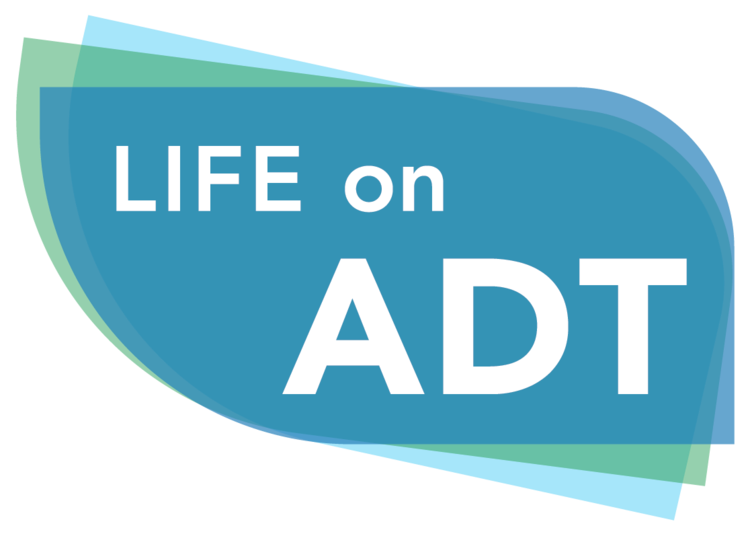The main reason we have this blog series is to report on new findings about ADT, in particular, ways to manage or avoid the more adverse effects caused by the main drugs used for ADT. Those are LHRH agonists and antagonists. Occasionally though, there are other drugs worth reporting on, particularly when their timely use can delay the need for patients to go on the more challenging LHRH drugs.
Here is a report on two such papers on a new context: using second generation anti-androgens as monotherapy.
The drugs of interest are the androgen receptor targeting agents, enzalutamide (Xtandi) and apalutamide (Erleada). These drugs are usually prescribed to patients with advancing disease and administered in combination with the LHRH drugs. However, there have now been two reports on patients administering these drugs who were diagnosed with low to intermediate grade disease, and elected to go on active surveillance, delaying more aggressive treatments.
Patients on active surveillance get their PSA regularly monitored and go for regular biopsies. If the biopsies indicate disease progression, then they go for more definitive treatments, such as a prostatectomy or radiotherapy.
In the most recent paper, 22 men who were on active surveillance, went on apalutamide for three months. They all had biopsies before starting the drug treatment. After three months, they had a follow-up biopsy and 57% of the men’s biopsies came back clean; i.e., no sign of disease! The men were biopsied again after a year and 33% had negative biopsies. At two years out, approximately 20% still had clean biopsies.
Although this was a one arm (i.e., no control group) and unblinded study, it suggests that early use of the new anti-androgens can delay patients–who have low grade disease–from having to go for more aggressive treatments. A major problem though with this study is the small sample size.
The second paper involved a similar, active surveillance patient population but with a larger sample size, 114 men. Those men were on another commonly used anti-androgen, enzalutamide, and stayed on it for a year. The results were pretty much the same in demonstrating that early use of a second generation anti-androgens can slow disease progression as indicated by biopsy results.
Both studies suggested that monotherapy with second-generation anti-androgen drugs is less burdensome in terms of side effects then the LHRH drugs. That is not to say they don't have side effects. Fatigue was the most commonly reported side effect for the men in both studies. Otherwise the men appeared to have a better quality of life than men on the LHRH drugs.
We expect that these two papers will be followed up with a similar study using yet another second generation anti-androgens, namely darolutamide (Nubeqa). If that yields the same result, this could lead to a paradigm shift in how we think about sequencing ADT agents. In the past, patients needing systemic therapy started on an LHRH drug and, if that was not fully effective in arresting the cancer, a second-generation anti-androgens would be added in. However, it might be better for patients’ quality of life to start earlier with the anti-androgen alone. Then, if there is sign of disease progression, add in an LHRH drug.
Both papers have received a fair bit of criticism for a variety of reasons. Going on either drug is admittedly a form of active treatment and thus patients are no longer really on just surveillance. We also don't know whether a short-term improvement in biopsy results for patients diagnosed with low to intermediate grade disease will translate into any overall survival advantage. We need much larger and longer term studies to find out.
Furthermore, the drugs are expensive.
That said, a lot of patients, who start on active surveillance, get anxious when they see a rise in their PSA. Many find this stressful to live with and, although their cancer may never become symptomatic, give up on active surveillance and go for definitive invasive treatments. If short term use of an anti-androgen can slow down disease progression by a year or two, it should make men more likely to stay with active surveillance. We see that as a win.
References—
Schweizer MT, True L, Gulati R, Zhao Y, Ellis W, Schade G, Montgomery B, Goyal S, Nega K, Hakansson AK, Liu Y, Davicioni E, Pienta K, Nelson PS, Lin D, Wright J. Pathological Effects of Apalutamide in Lower-risk Prostate Cancer: Results From a Phase II Clinical Trial. J Urol. 2023; 209(2):354-363. doi: 10.1097/JU.0000000000003038. Epub 2023 Feb 1.
Shore ND, Renzulli J, Fleshner NE, Hollowell CMP, Vourganti S, Silberstein J, Siddiqui R, Hairston J, Elsouda D, Russell D, Cooperberg MR, Tomlins SA. Enzalutamide Monotherapy vs Active Surveillance in Patients With Low-risk or Intermediate-risk Localized Prostate Cancer: The ENACT Randomized Clinical Trial. JAMA Oncol. 2022; 8(8):1128-1136. doi: 10.1001/jamaoncol.2022.1641. Erratum in: JAMA Oncol. 2022 Aug 1;8(8):1225
